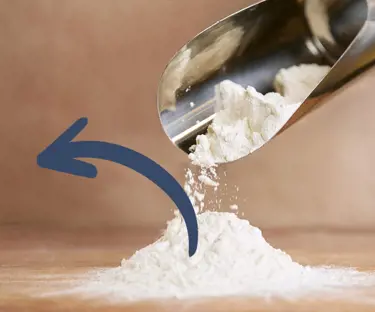Yet there are still mysteries surrounding just what’s in human breast milk, and we keep learning more about the roles played by the components we do know of. I was lucky to be able to work with this field in my recent PhD research, giving me the opportunity to delve deeper into this fascinating substance.
One compound that I investigated closely is osteopontin. It’s one of the proteins in human milk that seems to be particularly important for babies’ immunity. There’s comparatively little of it in bovine milk, so there is concern that babies fed infant formula might be missing out on the benefits of adequate levels of osteopontin.
It’s everywhere
I’ll diverge a bit here to explain more about the bigger picture of osteopontin. As the “osteo” part of the name indicates, osteopontin was initially identified as a component of bone. While it’s undoubtedly a bone-building substance, it is also a multi-functional protein found in all bodily fluids. Nowhere is it more abundant than in breast milk, where it turns up in much higher levels than in the mother’s bloodstream. This is a strong clue that nature has prioritised its presence in breast milk.
During my study, we investigated how much osteopontin is in human milk, with a specific focus on whether this varies around the globe. In light of evidence that other human milk components vary in quantity among women from country to country, we launched a multi-nation survey of osteopontin in human breast milk.
A cross-cultural question
What followed was a collaboration* between researchers and 629 generous milk donors spread across China, Denmark, Japan, and the Republic of Korea. More than 800 milk samples were donated and analysed for osteopontin – and the results were surprising.
We found, in fact, that Danish mothers had somewhat less osteopontin in their milk than mothers from the Asian countries. Perhaps we shouldn’t have been so surprised. As I mentioned earlier, levels of other human milk components have been shown to vary between geographic regions and ethnicities. A specific type of milk sugar, the human milk oligosaccharides, is one of them, as is the whey protein lactoferrin, along with the growth factor TGF-beta. So there is something about location/geography, diet, or environment, or, maybe, genetics, that confers differing levels of these substances in breast milk.
Reducing levels
Another interesting variation that’s been measured in many of these compounds is their changing levels during the course of lactation. In our study, Chinese and Japanese mothers provided multiple milk samples, which revealed a decline in osteopontin concentration as the babies grew older.
Could this decline be because the babies need it less as they age? It’s possible. The evidence points strongly to osteopontin providing babies with immune defense; from promoting immune-regulating cells through to fewer days of fever. Much of this evidence comes from studies that measure and compare immune markers of formula-fed and breastfed infants, and the researchers supplement formula with osteopontin to see what difference it makes. The general consensus is that adding extra osteopontin to formula shifts babies’ biology to be more similar to that of breastfed babies.
On the horizon
Naturally, I’m keen on all babies having the advantage of breast milk, including optimal levels of osteopontin in those who are not breastfed. At present, boosted osteopontin, beyond the low levels found in bovine milk, isn’t something that can be offered in infant formula in many parts of the world. But that might change, as bovine osteopontin can now be purified and added to formula to make its level more like that of human milk.
Osteopontin is just one piece of the substantial jigsaw puzzle that human milk is. My research is part of a widespread, tenacious effort to learn about all of the puzzle pieces so that infant formula can mirror human milk as closely as possible, narrowing the gap between formula-fed and breastfed babies. This is a tall order, because breast milk is a more complicated concoction than most people could ever guess, and it comes without an ingredient list to tell us what to look for.
*The research was conducted with the support of Arla Foods Ingredients, Bean Stalk Snow Co., Ltd (Japan), Biostime Health Products Ltd. (China) and Maeil Dairies Co., Ltd. (Korea).
Arla Foods Ingredients supports the WHO recommendation for exclusive breastfeeding for the first six months of an infant’s life and continued breastfeeding up to the age of two or beyond in combination with nutritionally appropriate complementary foods.
This blog contains material and information intended for B2B customers, suppliers and distributors, and is not intended as information to the final consumers.


